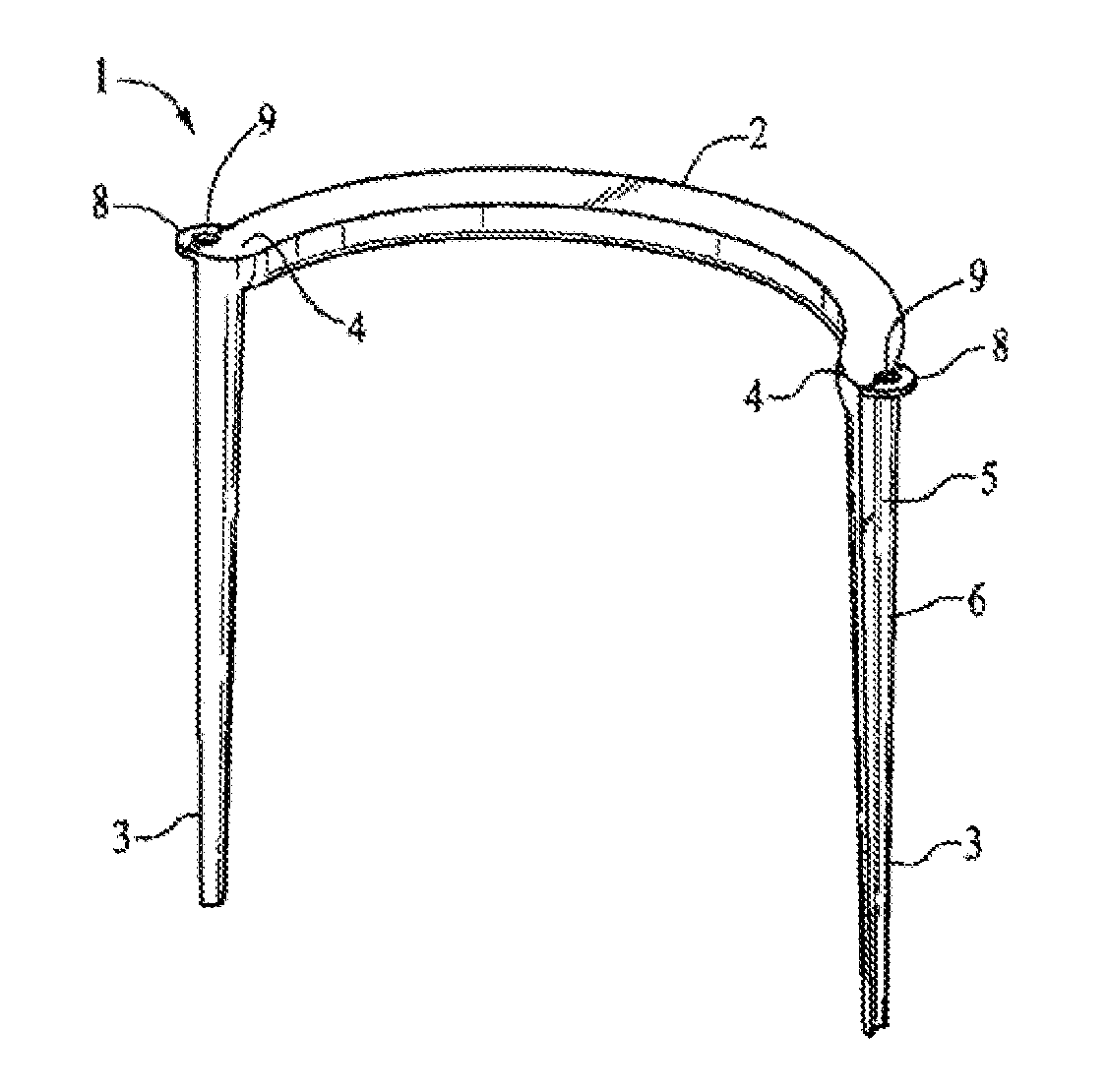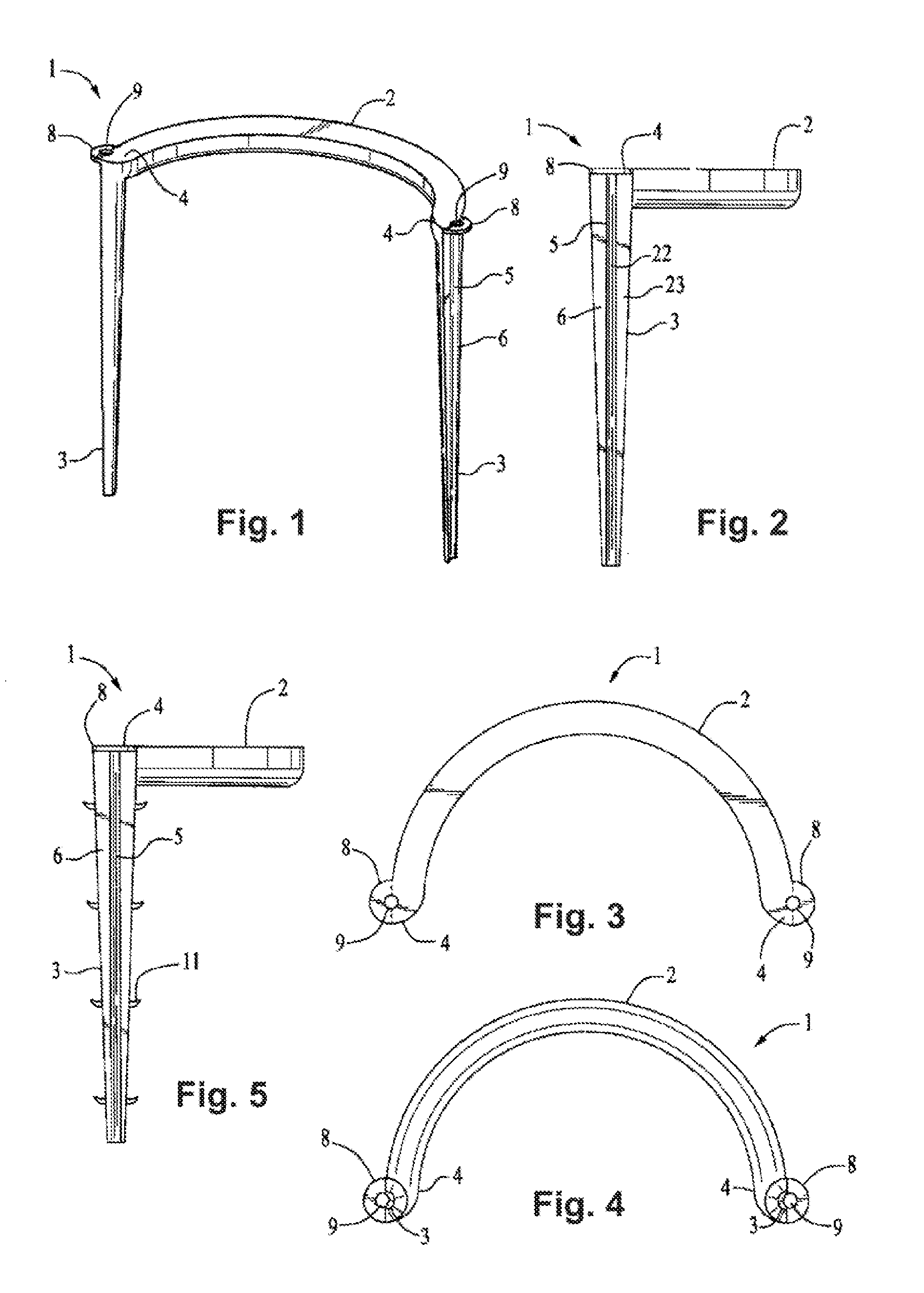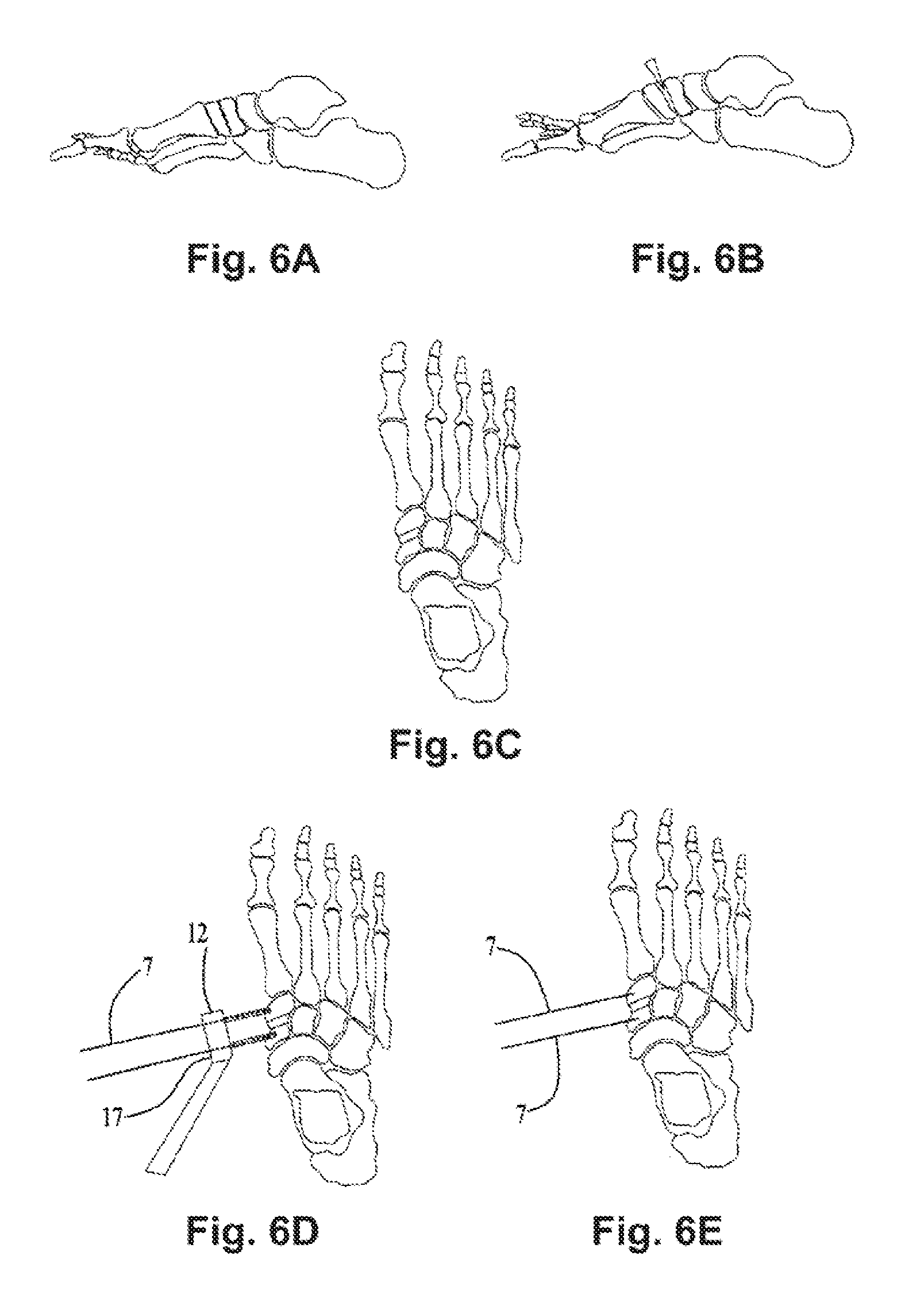Surgical device, system and method of use thereof
a surgical device and a technology of a surgical device, applied in the field of surgical devices, systems and methods, can solve the problems of fractures, less than optimal mechanism of such staples, and a large amount of percussive force applied to drive the staples, and achieve the effect of repairing a bone fractur
- Summary
- Abstract
- Description
- Claims
- Application Information
AI Technical Summary
Benefits of technology
Problems solved by technology
Method used
Image
Examples
Embodiment Construction
[0072]The present invention overcomes disadvantages of the prior art, as identified and disclosed by the inventor, by providing an improved compression staple and an easy-to-use system and method for its insertion for the internal fixation of bone fractures, fusions, and osteotomies. More specifically, the present invention includes a robust grooved and tabbed surgically implantable staple and can be easily inserted over guide wires and across a fractured bone to provide stability and compression across the desired site. The compression staple can be made of a shape memory metal material or alloy, such as nickel titanium, or another metal material or alloy, such as stainless steel or titanium. The staple is preferably made of a non-corrodable metal material compatible with use in the body. The staple may also be made of a bio-absorbable material. Other materials used for bone fixation include vitalium, chrome cobalt, and suitable bio-compatible polymeric materials.
[0073]Different em...
PUM
 Login to View More
Login to View More Abstract
Description
Claims
Application Information
 Login to View More
Login to View More - R&D
- Intellectual Property
- Life Sciences
- Materials
- Tech Scout
- Unparalleled Data Quality
- Higher Quality Content
- 60% Fewer Hallucinations
Browse by: Latest US Patents, China's latest patents, Technical Efficacy Thesaurus, Application Domain, Technology Topic, Popular Technical Reports.
© 2025 PatSnap. All rights reserved.Legal|Privacy policy|Modern Slavery Act Transparency Statement|Sitemap|About US| Contact US: help@patsnap.com



